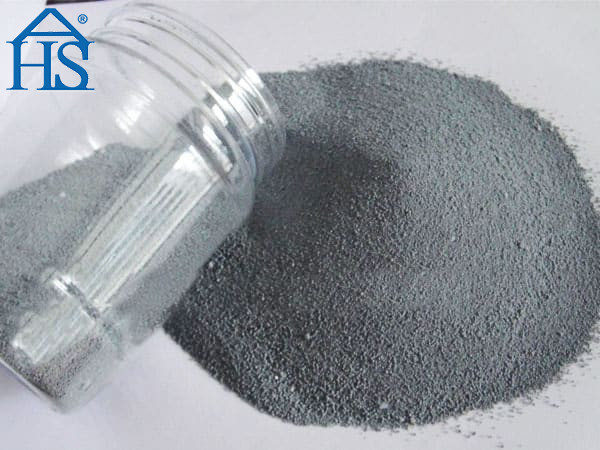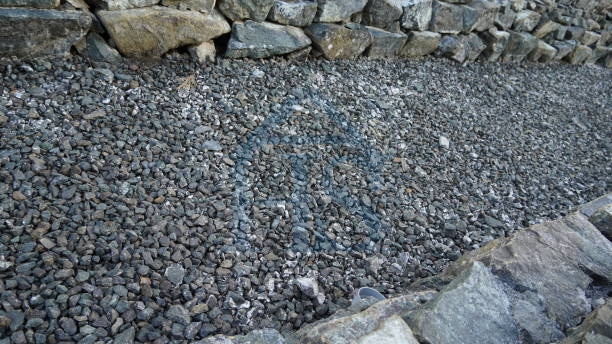In the industrial landscape, few byproducts have found as much use as 微硅粉. Also known as microsilica, it’s a valuable component in numerous applications. But its rise isn’t without challenges. This article delves into the journey of silica fume towards sustainable development, where we balance its utility with environmental and health considerations.
什么是微硅粉?
Origin and Production
Silica fume’s story begins in the electric furnaces used in the production of silicon metal or ferrosilicon alloys. The reduction of high-purity quartz with coal in these furnaces leads to the formation of silica fume. The off-gas from the furnace is cooled, and the silica fume is collected in baghouse filters.
Properties and Uses
Silica fume is essentially very fine particles of silicon dioxide (二氧化硅) with a large surface area. Its extreme fineness and high silica content make it a highly effective pozzolanic material. This means it reacts chemically with calcium hydroxide, 水泥水化的副产品, to form compounds possessing cementitious properties. It’s primarily used in concrete where it imparts high strength and durability.
The Need for Sustainable Development
硅粉对环境的影响
Despite its usefulness, silica fume production presents an environmental challenge. The production process is energy-intensive and results in significant CO2 emissions. 而且, if not collected and used, the silica fume can contribute to particulate matter pollution.
Health Impact of Silica Fume
There’s a human element to the problem too. Workers exposed to silica fume can face health issues, particularly respiratory conditions like silicosis. Clearly, a more sustainable development path for silica fume is necessary.
Pathways for Sustainable Development of Silica Fume
Clean Production Techniques
To address these challenges, clean production techniques have been developed. These include energy-efficient furnaces and improved collection systems to ensure minimal silica fume escapes into the environment.
Recycling and Reuse
The potential for recycling and reusing silica fume is another avenue being explored. Silica fume can be incorporated into various products, 包括 具体的 和 耐火材料, reducing the need for landfilling.
Legislation and Policies
Governments worldwide are stepping up with legislation and policies that encourage or mandate the sustainable handling of silica fume. This top-down approach has been effective in bringing about positive change.
| [单片机 / RMC] Recovered Mineral Component: |
CO2 emissions – kg per metric ton |
Compressive strength efficiency ratio @ 28 天 |
Avoided CO2 emissions per pound substituting for cement | Energy Savings per pound substituting for cement | Avg. Life Cycle Improvement per 1% substitution |
| Portland Cement | 959 | 100 % | – – – | – – – | – – – |
| Slag Cement | 155 | 90 % | 0.60 lb | $ 0.05 | + 2.4 % |
| 粉煤灰, Class F | 93 | 65 % | 0.97 lb | $ 0.08 | + 3.8 % |
| 二氧化硅 Fume |
14 | 300 % | 2.10 lb | $ 1.23 | + 18.0 % |
Sustainability advantages of microsilica fume over other supplementary cementitious materials (单片机)/Recovered Mineral Components (RMC)
案例研究: Successful Implementations
There are several examples worldwide where the sustainable development of silica fume has been successfully implemented. These provide valuable lessons for others in the industry.
Norway’s Elkem: A Leader in Sustainable Silica Fume Production
埃肯, a Norwegian company, is one of the world’s leading companies in environmentally responsible production of materials. It’s a significant producer of silica fume, with a strong commitment to sustainable practices. Elkem utilizes advanced furnace designs to ensure maximum energy efficiency. Its stringent process control and collection methods ensure that nearly all the silica fume is captured, minimizing environmental pollution.
印度: Turning Silica Fume into a Resource
In India, silica fume has found a place in the building industry as an additive to concrete, resulting in high-strength concrete that’s also more durable and resistant to chemical attacks. The use of silica fume not only diverts it from being a waste product, but it also significantly reduces the carbon footprint of the building industry by reducing the amount of cement needed in concrete.
Waste to Wealth in China
中国, as one of the largest producers and consumers of silica fume, has made significant strides in sustainable management. The country has implemented legislation that mandates the collection and utilization of silica fume, turning a waste product into a valuable resource. The collected silica fume is used in various sectors, including the construction and ceramics industry, thereby minimizing environmental impact.
These case studies demonstrate that sustainable development of silica fume is not only possible but also economically viable. 然而, they also underscore the importance of supportive legislation and the need for innovative thinking in turning a waste product into a valuable resource.
高铁’ contribution to the sustainable development of silica fume
河南优之源 (高铁) has been contributing to the sustainable development of silica fume by employing a variety of methods that promote sustainability and environmental preservation. We have incorporated clean production techniques, including energy-efficient furnaces and improved collection systems, to ensure minimal silica fume escapes into the environment. This approach addresses the challenges of managing silica fume and its potential environmental impact.





